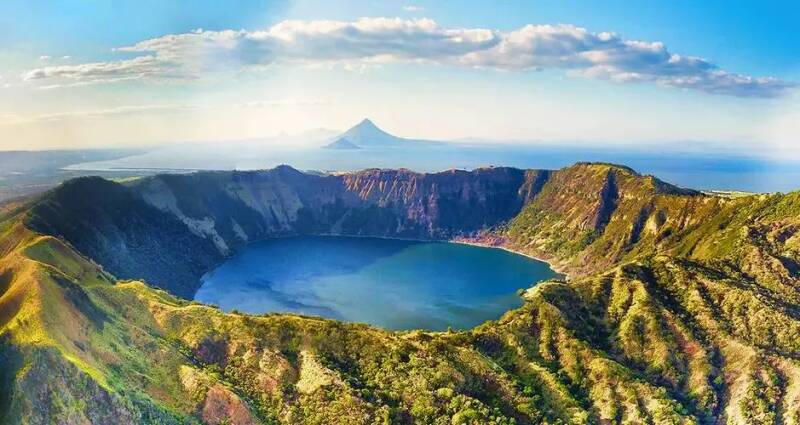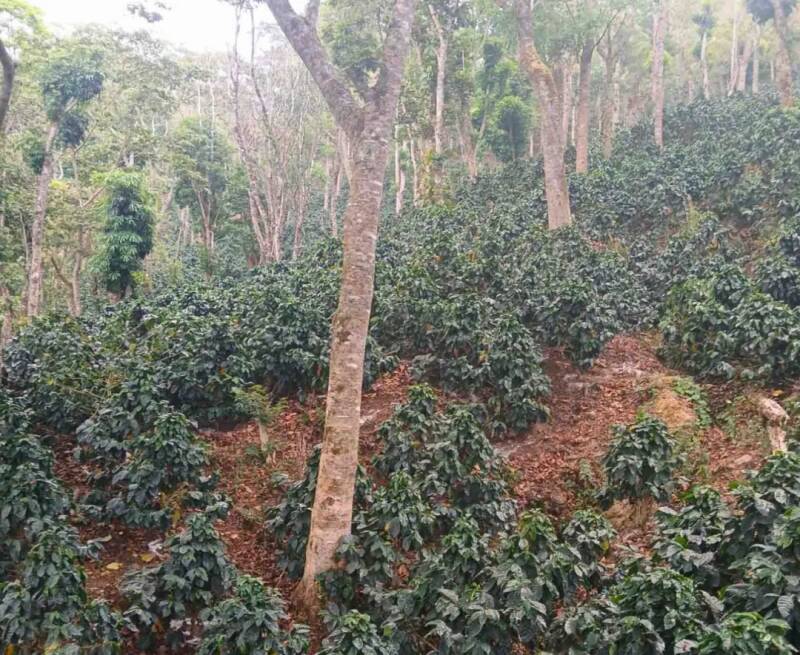Introduction to Nova Segovia, the coffee producing area of Nicaragua in Central America
The economy of Central America is dominated by agriculture, especially for export of bananas, coffee, sugar cane and other tropical cash crops, all because the topography of the region is dominated by plateaus, mountains and forests, and has a volcanic belt more than 1300 kilometers long.
Due to the accumulation of volcanic ash, fertile soil and diverse climate here, many countries in Central America are famous for producing coffee, such as Nicaragua, Costa Rica and Panama. Although Nicaragua is not as well-known as Costa Rica and Panama, the coffee growing conditions in Nicaragua are no less than those in other Central American countries.

The coffee history of Nicaragua began with the arrival of colonists in the mid-19th century, when the first coffee trees were planted in the plains of Nicaragua near the Pacific Ocean. By the late 20th century, political unrest and civil war in Nicaragua had a serious impact on the local coffee industry, when many coffee farms were abandoned. After the arrival of Hurricane Mitch in 1998, which destroyed most of the coffee infrastructure, the hurricane was followed by drought, which dealt a heavy blow to the country's economy.
Nicaragua was still in a period of recovery from 1999 to 2003, but at that time the coffee price crisis affected the global coffee industry, making it difficult for farmers to make ends meet and had to grow fruits and vegetables for a living. Later, cooperatives played an important role in the reconstruction of the coffee industry in Nicaragua, and as the coffee market matured, local cooperatives supported their community members by establishing new processing infrastructure, providing training, developing strong quality assurance plans and training full-time staff to help farmers cope with the changing coffee industry.

The development of the coffee industry in Nicaragua is due to the planting conditions in Nicaragua. Nicaragua is the largest country in Central America, with a number of volcanoes and lakes. The north-central part of the country is a highland where coffee is mostly grown.
The highland plain is high-temperature and rainy, with an average temperature of 18 ℃ and annual precipitation of about 1500-2500 mm. The rainy season is from May to December each year. With the fertile soil given by the volcano, the right temperature and rich water resources, it is very suitable for coffee to grow here.
The country is mainly divided into three producing areas, namely Sinotega Jinotega, Matagalba Matagalpa and Novo Segovia Nueva Segovias, all of which are concentrated in the north of the country.
Among them, New Segovia Nueva Segovias has come to the fore in recent years, appearing on the Nicaraguan COE list all the year round. New Segovia Nueva Segovias, located on the northern border of Nicaragua, near Honduras, is one of the highest coffee-producing areas in the country, growing at about 1100-1650 meters above sea level, and the relatively low humidity here allows for the accumulation of sugar in coffee berries, coupled with the regional characteristics of volcanic soil and rainforest cover, making coffee sweet and complex.
There are many well-known coffee farms in the area, such as Los Suyates Farm. According to Leticia Milagros Gonzalez Morazan, who manages the farm at an altitude of 1440 to 1700 meters, the farm pays great attention to the protection of animals and plants. In addition to growing coffee, it also grows other crops, which grow under shade trees, which can delay fruit ripening and maintain the diversity of local and wildlife.
The farm has been participating in the Nicaraguan COE since 2021 and won the first prize in 2022, giving it more money to invest in the farm, and this year it won second place in the 2024 COE.
Important Notice :
前街咖啡 FrontStreet Coffee has moved to new addredd:
FrontStreet Coffee Address: 315,Donghua East Road,GuangZhou
Tel:020 38364473
- Prev

Microsoft collapsed, and Starbucks directly delivered coffee for free?!
▲ Click to pay attention| Daily Boutique Coffee Culture Magazine Coffee Workshop Yesterday afternoon, an earthquake in the digital world swept the world. Access to Microsoft's Microsoft 365 series services has been disrupted, causing a "blue screen" on many Windows computers around the world
- Next

Logo War! There are not many symbols left for the coffee shop
▲ Click to pay attention| Daily Boutique Coffee Culture Magazine Coffee Workshop Recently, a netizen wanted to order a drink. When he opened the takeout app, he searched the coffee shop. The interface popped up with a black symbol on a white background. He couldn't help but sigh,"Nowadays, coffee roll calls are so abstract?" This discovery made netizens suddenly open their minds
Related
- Being chased out of the rain in front of Starbucks?! Store: Sheltering from rain under umbrellas poses a safety hazard
- The white moonlight has changed?! Lucky launches "Big Winter Pear American"
- Hand-brewed coffee three-stage method, high-sweet and universal brewing method to share! What does the high sweet water level of hand-brewed coffee mean?
- What is the difference between raw, refined and full espresso coffee? How to extract espresso and taste good?
- A complete list of coffee bean names and their meanings! What is Yejia Shefi coffee? Where is Mantelin coffee?
- What grade does Arida Manor Kaduai coffee beans belong to? What treatment is Arida ASD slow anaerobic sun exposure?
- The milk tea cup becomes smaller?! Overlord Tea Girl launches a new "Return to Yunnan" series
- Accused of selling counterfeit and high-priced coffee beans! Well-known boutique coffee brand "Oukelao" bowed and apologized!
- How to make espresso dumplings? Can I eat coffee and glutinous rice balls together?
- Save the unformed and stagnant powder cakes in one second! What is the problem with stagnant water in the powder bowl of the espresso machine?

